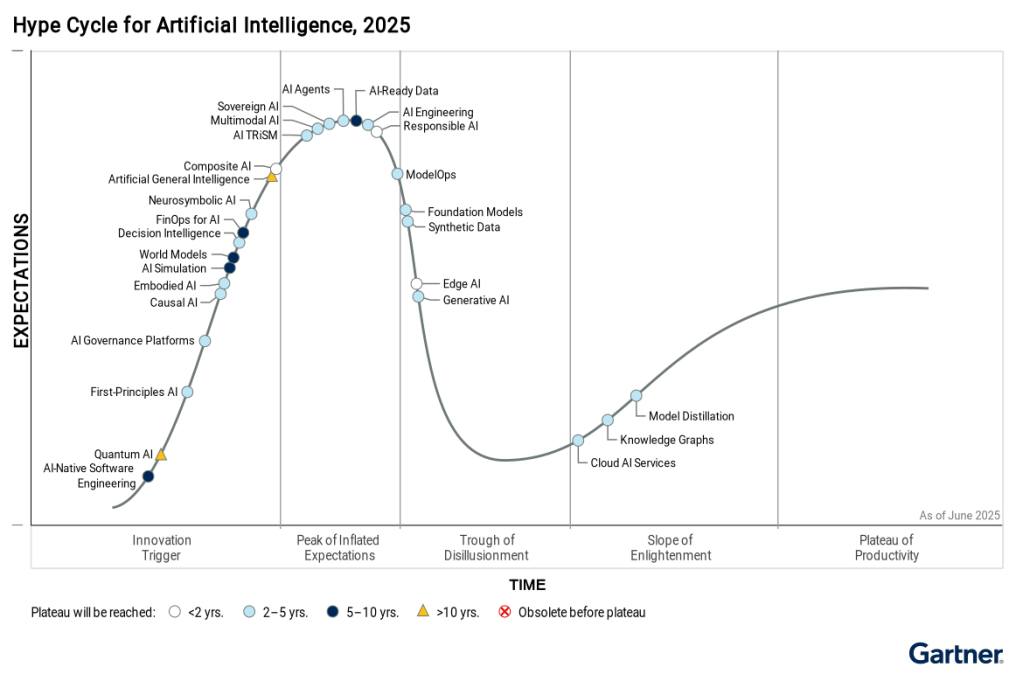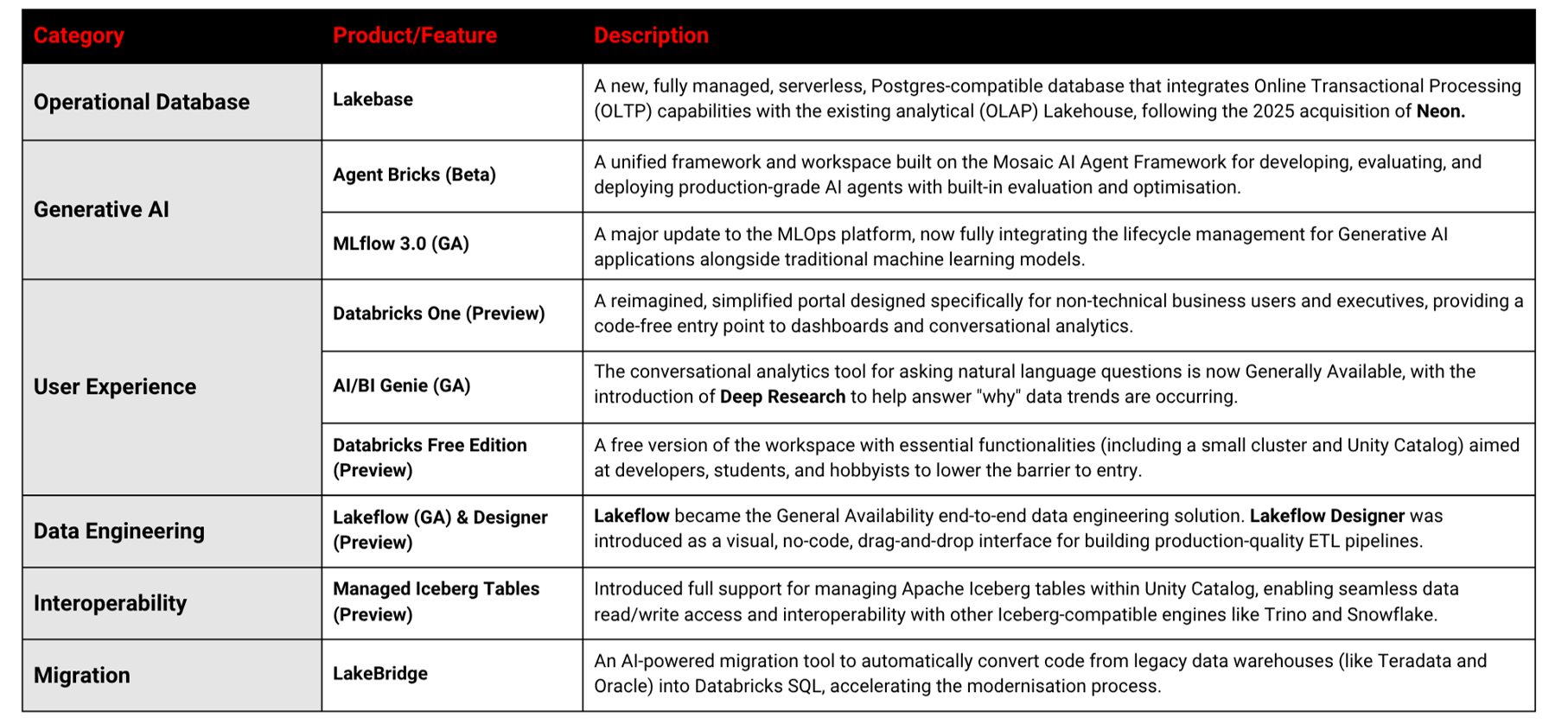
2025 Retrospective: The Band-Aid Problem
The year 2025 marked a significant shift in the AI landscape, moving from the initial hype and experimentation of Generative AI (GenAI) to a focus on scalable, reliable, and integrated enterprise solutions.(Gartner)
The defining feature of 2025 was the stark divide between investment and measurable business return. We’ve seen three key trends:
1. Pilot Failure Rates
What happened? Up to 95% of custom enterprise AI pilots failed to reach production or deliver tangible P&L impact
Why did this happen? Companies solved technical problems, but not core business problems. We called this the Band-Aid Problem.
2. Investment
What happened? Tens of billions of dollars ($30-$40 billion) in enterprise spending with little to show for it.
Why did this happen? A symptom of the Band-Aid problem was large investments in superficial applications of AI, without foundatitional redesign.
3. Rare Successes
What happened? Successful deployments (like Air India's 97% automated customer service) started with a specific business pain point, not model capabilities
Why did this happen? End-to-end workflow transformation, not simply an attempt at individual co-pilot productivity gain.
We saw the core issue as what we coined “the Band-Aid Problem”, where many companies fall into a dangerous trap of superficial adoption of AI, launching “safe” pilot projects that fail to deliver any value. These projects failed because they did not retain context, adapt, or integrate across fragmented, brittle enterprise workflows.
While employee-driven "Shadow AI" (using personal accounts for work) often delivered some increases in individual productivity, formal enterprise initiatives stalled due to a lack of central governance, system integration and thinking more holistically about the value chain rather than small, point solutions.
“We can all implement simple, productivity gain use-cases, but that’s not going to move the needle for your business or prevent you from being disrupted. This requires finding the use-cases that are transformational for your business and industry, and aligning them to your strategic objectives. The spicy ones!" Gareth Martin, CEO, Manuka
For a deep dive into this topic, check out our whitepaper “The Band-Aid Problem in AI”.
But what else happened in 2025?
The Rise of "Agentic AI" and Autonomous Systems
This was perhaps the defining trend of 2025, shifting the focus from models that generate content (LLMs) to AI Agents designed to take action and complete multi-step tasks. (AI News)
- Impact on Business Adoption: This news made AI a core part of operational infrastructure, not just a productivity tool.
- Automation of Complex Workflows: AI agents began triggering workflows, interacting with software (CRM, ERP), and handling end-to-end tasks with minimal human input (e.g., auto-approving low-risk policy renewals, managing end-to-end e-commerce fulfillment). (Azilen)
- Executive Focus: A survey reported that 78% of executives agreed that digital ecosystems would need to be built for AI agents as much as for humans over the next three to five years, highlighting this as a major strategic priority. (AI News)
Whilst this new type of AI garnered much excitement, GenAI experienced something quite different.
"Agents and Agentic AI are the talk of the town, quite rightly as they have the potential to streamline business operations and be the catalyst for businesses to scale independently of headcount, but without the right foundations and infrastructure success will be limited." Tom Nicholls, CCO, Manuka
GenAI Enters the "Trough of Disillusionment" (The GenAI Divide)

According to analysis (like Gartner's Hype Cycle and various industry reports), GenAI entered a more mature, but also more challenging, phase.
Impact on Business Adoption: This tempered expectations and drove a focus on practical application and ROI.
- High Adoption, Low Transformation: While the adoption of tools like ChatGPT and Copilot remained high for individual productivity, a stark "GenAI Divide" emerged. Reports indicated that despite billions in enterprise investment, 95% of organisations were getting zero measurable P&L return from their GenAI efforts.
- Focus on Foundational Enablers: Companies shifted investment toward foundational technologies like AI Engineering and ModelOps (Model Operationalisation) to reliably and securely scale AI solutions, rather than just experimenting with new LLMs.
- Need for Context: The main reason enterprise-grade systems failed to reach production (only 5% did) was often due to a "learning gap", generic tools lacked the ability to adapt, remember context, and integrate seamlessly into complex, brittle workflows.
As the use and adoption of LLMs matured, so too did the approach. 2025 was the year that ‘the bigger the better’ became a thing of the past.
LLM Cost Reduction and Specialisation
The technology behind Large Language Models (LLMs) continued to advance rapidly in terms of efficiency, making real-time, large-scale deployment feasible for everyday business tasks.
Impact on Business Adoption: This made sophisticated AI financially viable for a wider range of enterprise applications.
- The Cost Cliff: The cost of generating a response from a leading LLM was reported to have dropped by a factor of up to 1,000 over the past two years, bringing it in line with the cost of a basic web search.
- Performance Over Price: Despite plunging prices, enterprises continued to prioritise performance over cost, often switching en masse to the newest, most capable model (e.g., an Anthropic model capturing a significant share of users within weeks of its release) rather than clinging to cheaper, older models. (Menlo)
- Domain-Specific LLMs: A significant trend was the move from general-purpose LLMs to domain-specific and fine-tuned models (e.g. for financial compliance, healthcare diagnostics, or legal document review), offering improved accuracy and adherence to compliance rules.
All this adoption of AI did not come without its own pitfalls however.
Increased Cyber Threats and the Need for AI Security
The democratisation of AI tools also led to a significant escalation in cyber threats, forcing businesses to prioritise defence.
Impact on Business Adoption: The necessity for robust cybersecurity became a mandatory prerequisite for adopting and scaling AI.
- AI-Enhanced Attacks: Approximately 16% of reported cyber incidents involved attackers leveraging AI tools to carry out sophisticated social engineering attacks, including creating realistic deepfakes of executives to induce fraudulent wire transfers (e.g., a reported $25.6 million fraud incident).
- New Security Demands: This threat landscape forced companies to significantly invest in cybersecurity measures, risk assessment, and AI-driven defense mechanisms to protect their newly automated and agent-driven workflows.
As these threats hit the headlines, governments and regulators struggled to keep pace. But, legal regulation is coming…
The Compliance Countdown
Regulatory deadlines will force a decisive focus on compliance, particularly for global enterprises.
- EU AI Act (A Moment of Truth): The full application of the remaining high-risk system obligations starts on August 2, 2026. This deadline compels organisations to finalise their risk assessments, establish auditability logs, and implement robust human oversight measures for any high-risk AI applications currently in use.
- Sovereign AI: In the US and other regions, the lack of a single unified federal law will fuel continued demand for Sovereign AI solutions. Companies will seek multi-cloud and edge computing strategies that ensure data and model residency comply with local laws and geopolitical concerns.
Databricks in 2025
As a pureplay Databricks consultancy, we also couldn’t pass up the opportunity to reflect on the many many improvements on the platform.
Databricks made several transformative product and company announcements in 2025, largely centered around the evolution of its Data Intelligence Platform and its push into the operational database and generative AI markets. The majority of these product launches were unveiled at the company's Data + AI Summit 2025.

Our Prediction for 2026 - Beyond the Band-Aid into Production and Governance at Scale
The year 2026 will mark a pivot in enterprise AI, moving decisively from experimentation to production and governance at scale.
The single most critical trend to watch is the rise of Agentic AI - autonomous systems capable of planning, reasoning, and executing multi-step tasks across different applications. Gartner predicts that 40% of enterprise applications will feature task-specific AI agents by the end of 2026, up from minimal adoption today.
Enterprises will shift focus from mere efficiency to measurable business outcomes, deploying agent ecosystems (or "agentlakes") for high-impact use cases like proactive IT support, autonomous cybersecurity response, and complex supply chain optimisation.
This transition brings two key forces into sharp focus.
The first is specialisation. General-purpose AI models will be insufficient. We expect a surge in Domain-Specific Language Models (DSLMs), fine-tuned on proprietary data to deliver higher accuracy and compliance for functions like legal, finance, and manufacturing.
The second will be one of governance and trust: As agents become autonomous "digital co-workers," AI security platforms and robust governance frameworks will become non-negotiable. Organisations must prioritise explainability, auditability, and clear human-in-the-loop protocols to manage risk and maintain trust in automated decisions. The AI debate will shift from "if it works" to "how to govern it."
We’re looking forward to the next 12 months of technological development, and as ever are excited to help guide our clients and partners through the many twists and turns in store.






